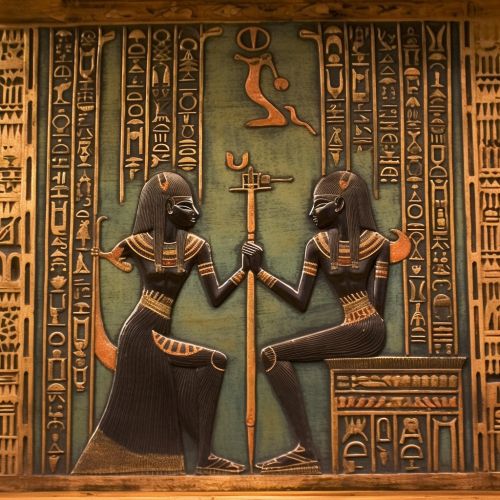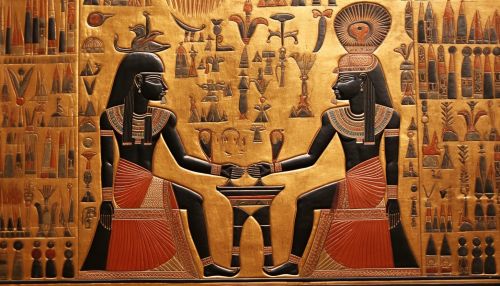Isis and Osiris
Mythology
The story of Isis and Osiris is one of the most enduring and influential myths in ancient Egyptian religion. Isis and Osiris were siblings, born to the sky goddess Nut and the earth god Geb. They were also husband and wife, ruling over Egypt as king and queen. Their reign was a time of prosperity and peace, where harmony prevailed and the land was fertile.


However, their brother Set, the god of chaos and storms, grew jealous of their power and success. In a plot to usurp the throne, Set tricked Osiris into lying in a beautifully decorated coffin, which he then sealed and threw into the Nile. The coffin was carried away by the river's currents, eventually coming to rest in a tamarisk tree in Byblos, where it was incorporated into the structure of the palace.
When Isis learned of her husband's fate, she set out to find him. Her journey took her to Byblos, where she retrieved Osiris' body and returned to Egypt. However, Set discovered Isis' actions and, in his rage, dismembered Osiris' body, scattering the pieces throughout Egypt.
Undeterred, Isis embarked on a quest to gather the pieces of her husband. With the help of other deities such as Anubis and Thoth, she was able to reassemble Osiris and used her magical abilities to resurrect him. This event is often associated with the emergence of mummification in ancient Egyptian culture, with Osiris becoming the god of the afterlife, the underworld and the dead.
Isis and Osiris had a son, Horus, who would later challenge Set for the throne of Egypt. The conflict between Horus and Set is another significant myth in Egyptian mythology, with Horus eventually emerging victorious, restoring order and justice to the land.
Worship and Cult
The worship of Isis and Osiris was widespread in ancient Egypt and extended into the Greco-Roman period. Temples dedicated to Isis and Osiris were found throughout Egypt, with major cult centers at Abydos and Philae.
Isis was revered as the ideal mother and wife, the patroness of nature and magic. She was also seen as the protector of the dead and goddess of children. Her worship extended beyond Egypt, reaching as far as the Roman Empire, where she was incorporated into the Roman pantheon.
Osiris, as the god of the afterlife and the dead, was a central figure in Egyptian religion. His resurrection was celebrated in annual festivals, which included the reenactment of his myth. The Osirian mysteries, associated with his worship, were considered to offer the promise of life after death to his followers.
Influence and Legacy
The myth of Isis and Osiris has had a profound influence on ancient and modern culture. It has been interpreted in numerous ways, serving as an allegory for the natural cycles of growth and decay, the triumph of order over chaos, and the promise of eternal life.
In ancient Egypt, the myth influenced religious beliefs and practices, particularly those related to death and the afterlife. The rituals of mummification and the concept of life after death are closely tied to the story of Osiris' death and resurrection.
In modern times, the myth has been explored in literature, music, and film. It continues to be a source of inspiration for artists, writers, and scholars, contributing to our understanding of ancient Egyptian culture and civilization.
